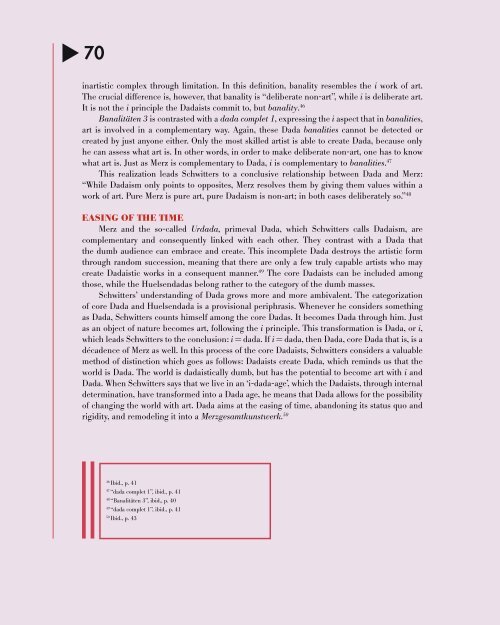Kurt Schwitters: Merz (2016) – Norman Rosenthal interviews Damien Hirst
Fully illustrated catalog published by Galerie Gmurzynska in collaboration with Cabaret Voltaire Zurich on the occasion of Kurt Schwitters: MERZ, a major retrospective exhibition celebrating 100 years of Dada. The exhibition builds and expands on the gallery’s five decade long exhibition history with the artist, featuring exhibition architecture by Zaha Hadid. Edited by Krystyna Gmurzynska and Mathias Rastorfer. First of three planned volumes containing original writings by Kurt Schwitters, historical essays by Ernst Schwitters, Ad Reinhardt and Werner Schmalenbach as well as text contributions by Siegfried Gohr, Adrian Notz, Jonathan Fineberg, Karin Orchard, and Flavin Judd. Foreword by Krystyna Gmurzynska and Mathias Rastorfer. Interview with Damien Hirst conducted by Norman Rosenthal. Includes full color plates and archival photographs. 174 pages, color and b/w illustrations. English. ISBN: 978-3-905792-33-1 The publication includes an Interview with Damien Hirst by Sir Norman Rosenthal about the importance of Kurt Schwitters's practice for Hirst's work.
Fully illustrated catalog published by Galerie Gmurzynska in collaboration with Cabaret Voltaire Zurich on the occasion of Kurt Schwitters: MERZ, a major retrospective exhibition celebrating 100 years of Dada. The exhibition builds and expands on the gallery’s five decade long exhibition history with the artist, featuring exhibition architecture by Zaha Hadid.
Edited by Krystyna Gmurzynska and Mathias Rastorfer.
First of three planned volumes containing original writings by Kurt Schwitters, historical essays by Ernst Schwitters, Ad Reinhardt and Werner Schmalenbach as well as text contributions by Siegfried Gohr, Adrian Notz, Jonathan Fineberg, Karin Orchard, and Flavin Judd.
Foreword by Krystyna Gmurzynska and Mathias Rastorfer.
Interview with Damien Hirst conducted by Norman Rosenthal.
Includes full color plates and archival photographs.
174 pages, color and b/w illustrations.
English.
ISBN:
978-3-905792-33-1
The publication includes an Interview with Damien Hirst by Sir Norman Rosenthal about the importance of Kurt Schwitters's practice for Hirst's work.
Create successful ePaper yourself
Turn your PDF publications into a flip-book with our unique Google optimized e-Paper software.
t<br />
70<br />
inartistic complex through limitation. In this definition, banality resembles the i work of art.<br />
The crucial difference is, however, that banality is “deliberate non-art”, while i is deliberate art.<br />
It is not the i principle the Dadaists commit to, but banality. 46<br />
Banalitäten 3 is contrasted with a dada complet 1, expressing the i aspect that in banalities,<br />
art is involved in a complementary way. Again, these Dada banalities cannot be detected or<br />
created by just anyone either. Only the most skilled artist is able to create Dada, because only<br />
he can assess what art is. In other words, in order to make deliberate non-art, one has to know<br />
what art is. Just as <strong>Merz</strong> is complementary to Dada, i is complementary to banalities. 47<br />
This realization leads <strong>Schwitters</strong> to a conclusive relationship between Dada and <strong>Merz</strong>:<br />
“While Dadaism only points to opposites, <strong>Merz</strong> resolves them by giving them values within a<br />
work of art. Pure <strong>Merz</strong> is pure art, pure Dadaism is non-art; in both cases deliberately so.” 48<br />
EASING OF THE TIME<br />
<strong>Merz</strong> and the so-called Urdada, primeval Dada, which <strong>Schwitters</strong> calls Dadaism, are<br />
complementary and consequently linked with each other. They contrast with a Dada that<br />
the dumb audience can embrace and create. This incomplete Dada destroys the artistic form<br />
through random succession, meaning that there are only a few truly capable artists who may<br />
create Dadaistic works in a consequent manner. 49 The core Dadaists can be included among<br />
those, while the Huelsendadas belong rather to the category of the dumb masses.<br />
<strong>Schwitters</strong>’ understanding of Dada grows more and more ambivalent. The categorization<br />
of core Dada and Huelsendada is a provisional periphrasis. Whenever he considers something<br />
as Dada, <strong>Schwitters</strong> counts himself among the core Dadas. It becomes Dada through him. Just<br />
as an object of nature becomes art, following the i principle. This transformation is Dada, or i,<br />
which leads <strong>Schwitters</strong> to the conclusion: i = dada. If i = dada, then Dada, core Dada that is, is a<br />
décadence of <strong>Merz</strong> as well. In this process of the core Dadaists, <strong>Schwitters</strong> considers a valuable<br />
method of distinction which goes as follows: Dadaists create Dada, which reminds us that the<br />
world is Dada. The world is dadaistically dumb, but has the potential to become art with i and<br />
Dada. When <strong>Schwitters</strong> says that we live in an ‘i-dada-age’, which the Dadaists, through internal<br />
determination, have transformed into a Dada age, he means that Dada allows for the possibility<br />
of changing the world with art. Dada aims at the easing of time, abandoning its status quo and<br />
rigidity, and remodeling it into a <strong>Merz</strong>gesamtkunstwerk. 50<br />
46<br />
Ibid., p. 41<br />
47<br />
“dada complet 1”, ibid., p. 41<br />
48<br />
“Banalitäten 3”, ibid., p. 40<br />
49<br />
“dada complet 1”, ibid., p. 41<br />
50<br />
Ibid., p. 43

















